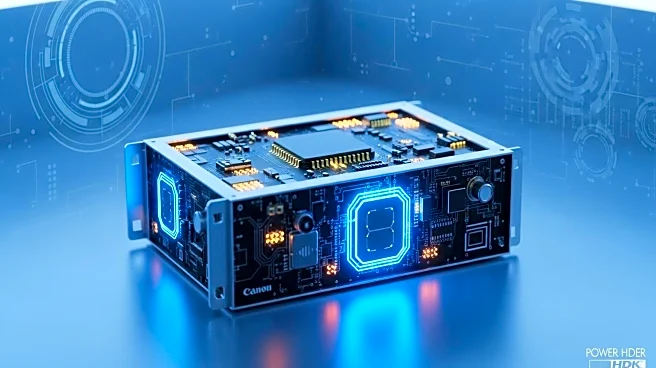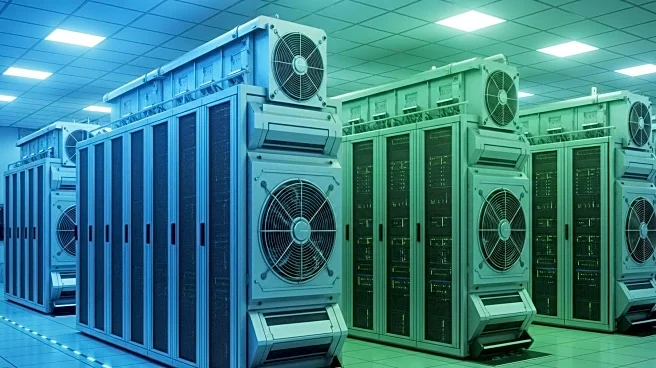What's Happening?
Navitas Semiconductor has unveiled new 100 V GaN FETs and 650 V GaN and SiC devices designed for NVIDIA's 800 VDC AI factory architecture. This development aims to address the power challenges of traditional data centers, which are unable to support the high-density requirements of modern AI and high-performance computing platforms. The new architecture allows direct conversion from utility power to 800 VDC, enhancing energy efficiency and system reliability by eliminating multiple conversion stages. Navitas' technologies promise to deliver unprecedented levels of power density, efficiency, and scalability, crucial for the next-generation AI infrastructure.
Why It's Important?
The introduction of these advanced power solutions is significant as it supports the industry's shift towards more efficient and scalable AI computing platforms. By enabling NVIDIA's AI factory infrastructure, Navitas is contributing to the transformation of AI data centers, potentially leading to more reliable and energy-efficient operations. This development could benefit industries that rely heavily on AI and high-performance computing, offering them the ability to manage larger workloads with improved efficiency and reduced operational costs.
What's Next?
Navitas is expected to continue its focus on developing high-performance power solutions that cater to the demands of AI factories and smart energy infrastructure. The company plans to leverage its GaN and SiC technologies to further enhance power conversion efficiency across various stages of AI data centers. As the industry progresses, Navitas' innovations could lead to wider adoption of 800 VDC architectures, potentially influencing future data center designs and operations.
Beyond the Headlines
The transition to 800 VDC power architecture signifies a major shift in data center power distribution, improving efficiency and aligning with global low-voltage DC standards. The integration of GaN and SiC technologies could lead to long-term changes in power management for high-demand computing environments, impacting technological advancements and environmental sustainability.











